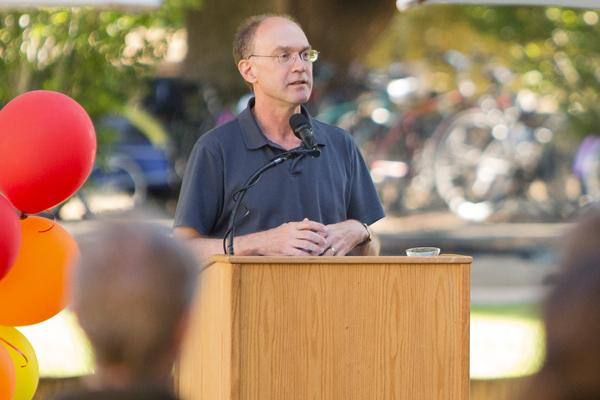
New open-source platform for Stanford coursework
Stanford online coursework will be available starting this summer on a new open-source platform, OpenEdX, the university announced on June 11.
Among the first programs to run on the OpenEdX platform will be Stanford's popular "Three Books" summer reading program for incoming Stanford freshmen, along with two public courses now open for registration – one using contemporary health topics to teach statistics and another helping K-12 teachers and parents change the way students approach math. Courses from Stanford's Department of Electrical Engineering are among those that will run on the platform beginning this fall.
In April, Stanford and edX, the nonprofit online learning enterprise founded by Harvard and MIT, announced they would collaborate on future development of the edX online platform. As part of that effort, edX has released the platform as open-source for developers around the world to use. Stanford will now use the OpenEdX platform as one of several platforms for both online course content for on-campus Stanford students and online classes available to the public.
The advent of OpenEdX, which replaces Stanford's previous platform, Class2Go, comes as the Stanford Online organization celebrates its one-year anniversary – harkening back to the first round of seed grants Stanford established last spring to help faculty across the campus take their courses or course components online.
More than 100 people affiliated with Stanford's online learning activities gathered recently to mark the effort's advances over the last year. They included Candace Thille, a pioneer in online learning at Carnegie Mellon University who recently accepted a faculty appointment at Stanford's Graduate School of Education.
"Clearly, something very important is happening in the evolution of higher education," said John Mitchell, professor of computer science and vice provost for online learning at Stanford. "It's a seismic shift in the academic landscape."
In addition to developing online coursework and pursuing research into the opportunities and outcomes of online learning, Stanford over the last year has been pursuing the development of open-source platforms to help make online learning as widely and easily accessible as possible.
Stanford developers contributed functionality such as real-time chat, bulk email, new installation scripts, operations tools and integration with external survey tools to the edX platform for its open-source release.
That open-source release means the platform is available for use by other universities and educational providers. Courses can be hosted internally by a university or externally using a third-party hosting service. When using an open-source platform, universities control the licenses for their content and can release content in a variety of configurations to a variety of audiences without special permission from a platform owner.
"This platform offers another avenue for the delivery of educational material from Stanford as well as an exciting opportunity for other universities to develop their own online coursework with minimal barriers to entry," Mitchell said. "By giving universities the ability to manage their online coursework directly or through a third-party provider, using a high-quality platform, we hope to continue broadening access to new educational opportunities for students of all types around the world."
Stanford continues to offer its faculty a range of platforms to choose from in hosting their online coursework, including Coursera and NovoEd (formerly Venture Lab) in addition to OpenEdX. Courses will continue to be offered on all three platforms, as well as through the Stanford Center for Professional Development, on YouTube and iTunesU, and elsewhere.
In the coming weeks and months, Stanford will host a number of courses and programs on the OpenEdX platform. Among them are the following:
"How to Learn Math," a free course for K-12 teachers and parents intended to improve students' engagement with math, will be offered on the platform beginning July 15 by Jo Boaler, professor of education. The course covers topics such as "Knocking Down Myths About Math," "Mistakes, Challenges and Persistence" and "Appreciating Algebra." The course is intended to help as teachers prepare to implement the new Common Core State Standards in K-12 education.
"Three Books," a summer reading program for incoming Stanford freshmen, this year will incorporate short video lectures, real-time text chat and a discussion forum for students hosted on the open-source platform. The platform will allow students to have conversations with one another about the texts and their ideas before arriving on campus as a way of building intellectual community.
"Statistics in Medicine," launching on the platform this week, is a free online course open to the public that provides a grounding in probability and statistics, drawing on examples from medical literature and the popular press. Each session will start with a "teaser" question, such as: Should I be worried about lead in lipstick? Does eating red meat increase my risk of being in a traffic accident? Students will learn how to read, interpret and critically evaluate the statistics in medical studies.
Stanford's Department of Electrical Engineering, starting this fall, will use the open-source platform for the delivery of online course materials, both for online components of "flipped classroom" courses for on-campus Stanford students and for MOOCs available to the public without credit.
More information on Stanford's work in online learning is available at http://online.stanford.edu.
Brad Hayward is Stanford's senior director for strategic communications.



